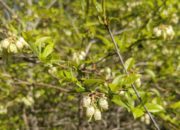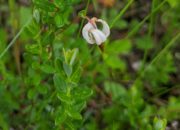Blueberries (Genus Vaccinium) are beloved by a wide range of bees, including a handful of specialists. The vase shape of blueberry flowers means that bees either need a long face to reach the nectar inside or need to cut a hole through the side of the flower (known as nectar robbing). Many of these bees are easiest to find and most studied on Blueberry farms, but wild blueberries occur statewide. Cranberries and Deerberry are technically in the same genus and each host to rare bees not yet recorded from Vermont.
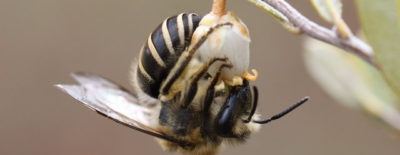
Blueberry Cellophane Bee (Colletes validus)
Not known from Vermont (as of May 2021), but occurs in both NH and MA. Similar to the ubiquitous Unequal Cellophane Bee, but closely tied to blueberries and sandy areas. Best distinguished by the length of the face. Image courtesy Michael Veit.
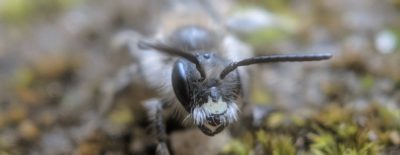
Bradley's Mining Bee (Andrena bradleyi)
Many Mining Bee species visit Blueberries, including two specialists: this one and the next species. Male Bradley's are distinct in having a partially yellow clypeus. Most of the VT records are from Chittenden County blueberry farms. Image courtesy Nathaniel Sharp.
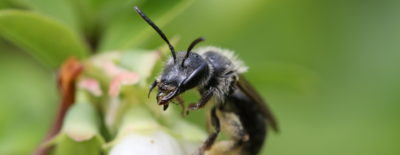
Carolina Miner Bee (Andrena carolina)
Perhaps more widespread than Bradley's and more likely to be found on other plant species, though has a distinct preference for blueberries (and related shrubs). Image courtesy Spencer Hardy.
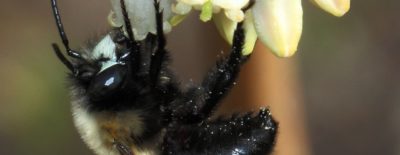
Blueberry Digger (Habropoda laboriosa)
A relatively large, southern bee with a strong preference for blueberries and redbud (Genus Cercis). Could easily be mistaken for a worker bumblebee. Not yet known from Vermont. Photo Courtesy Michael Veit
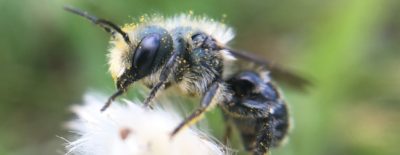
Mason Bees (genus Osmia)
There are several blueberry-associated Mason Bees of interest in Vermont. Most will not be identifiable from photographs, though the small and dark Osmia laticeps is a northern species that may occur in VT.
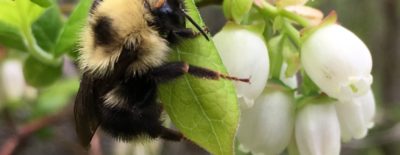
Bumble Bees (genus Bombus)
Bumble Bees have been shown to be much better pollinators of commercial blueberries than honey bees. Numerous species regularly visit blueberries. Image courtesy Leif Richardson.
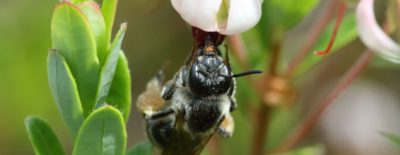
Blunt-Horn Bees (Genus Melitta)
Two of the three Blunt-Horn Bees in the Northeast are Vaccinium specialists and might occur in Vermont. One on Cranberry and the other on Deerberry (Vaccinium stamineum). Image courtesy Michael Veit.
Blueberry Distribution: To see the global distribution, check out the iNaturalist account, and toggle the GBIF layer on the map.
